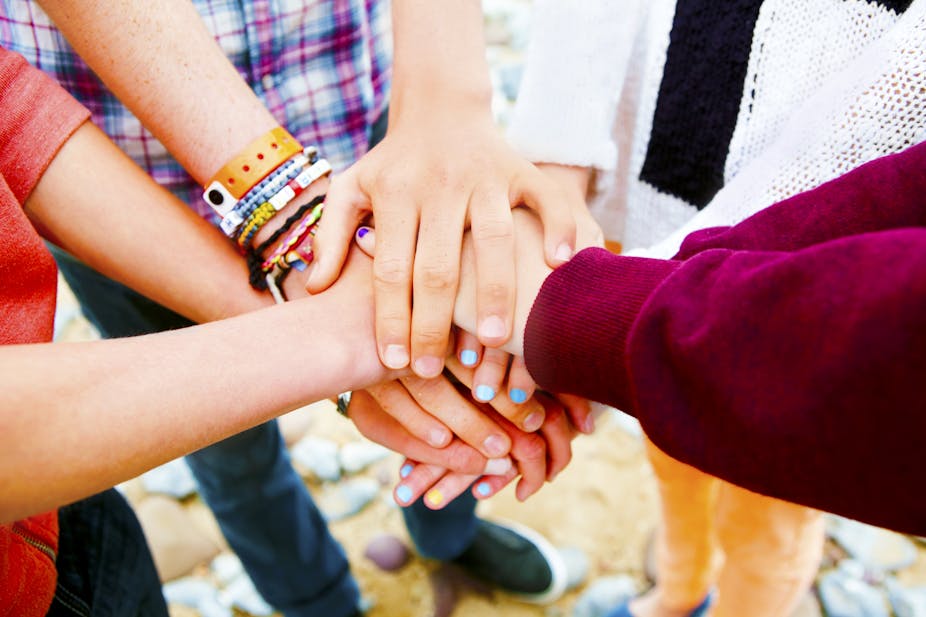The psychiatrist Harry Sullivan believed that nothing is a more significant determinant of psychological well-being than the nature of our closest social bonds. In adolescence, research has consistently linked the quality of friendships to important outcomes such as emotional health, self esteem, the ability to overcome social anxiety, and achievement at school.
A recent study by researchers from Florida Atlantic University has explored the long-term stability of adolescent friendships in US schools. In particular, the researchers were interested in the breaking up of adolescent friendships, and the factors which predicted those break ups.
The study found that only 1% of friendships that started in seventh grade – when the pupils are 12-13 years old – lasted for the full five-year period of the study. Friendships that began in seventh grade were at greatest risk of dissolving within the first year (with a 76% hazard rate). When they made it beyond the hazardous first year, the chances of breaking up after three years (64% hazard rate), four years (47% hazard rate), or five years (30% hazard rate) was diminished.
The researchers discovered that a number of factors could help to predict the break-ups of teenage friendships. They found that the characteristics of individual teenagers – such as sex, age, ethnicity, aggressiveness, school competence – were not important when predicting the success of friendships. So, girls’ friendships were no more likely to break up than boys’. Instead, what mattered was whether or not two adolescent friends shared these characteristics. So, friends who differed in gender, peer acceptance, physical aggression, or school competence were much more likely to break up than friends who were similar in these respects.
Fickle youth?
It would be easy to suggest that this study is evidence that adolescents (or American adolescents, at least!) are a fickle bunch – at the mercy of a period of development characterised by instability, turbulence, and confusion about identity – all of which is reflected in their friendships (which may well be true).
I am already having nightmares involving those who like to micromanage young people’s education. For example, little Johnny and his parents might be “advised” not to invest in his friendship with Suzy because statistically, it simply won’t last – for a start, she’s a girl, they have mismatched test scores and she’s more popular than he is.
Clearly, we should be careful about the meaning we attach to such data. There are important questions to entertain before we jump to conclusions. For example, it could be that the perilous nature of adolescent friendships is a reflection of our education system’s deficiencies, rather than some inherent characteristic of adolescent psychological development.
Banning best friends
Increasingly, education is becoming a project that views the production of the “knowledge worker” – that is, a well-qualified, market ready, intellectual product – as its reason for existence. The worry is that this erodes an important space for young people to nurture and develop the emotional closeness, intimacy, and relational skills that will enable them to form warm, nurturing, enduring friendships through life.
From a psychological point of view, I have recently argued that education policy which prioritises the production of knowledge workers could be fundamentally at odds with the idea that education should serve as a space for the formation of genuine human relationships. What we could be witnessing in this study is evidence that we simply aren’t providing the necessary conditions in which stable, enduring adolescent relationships can develop.

You don’t have to look very far to find recent calls in favour of limiting and micromanaging children’s friendships in education, on the grounds that they disrupt performance. A number of schools in the UK have looked at adopting measures to prevent children from having best friends. As one UK head teacher suggested:
There is sound judgement behind it. You can get very possessive friendships. I would certainly endorse a policy which says we should have lots of good friends, not a best friend.
This leads us to question why relationships between pairs of young people who are different (in relation to factors such as sex and achievement) aren’t flourishing in our schools. It should also prompt us to take a closer look at the extent to which we’re fostering acceptance and diversity through human connections in our schools.
In her book Educational Binds of Poverty, University of Bath sociologist Ceri Brown has highlighted the incredible struggles some children face to establish friendships in the context of such “difference”. She highlights the woefully inadequate structures in place to support children to develop fulfilling relationships, in a system that is focused on academic achievement above all else.
Close relationships in adolescence are a critical part of human development, and education must do more to ensure it becomes a space for young people to reflect upon, nurture, and develop them.

